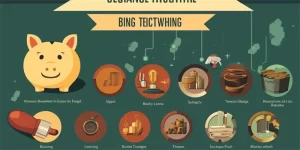YouTube, one of the world’s largest online video-sharing platforms, has become a lucrative avenue for content creators to earn money. While human creativity and talent have traditionally been the driving forces behind successful YouTube channels, there is a growing concern about the role of bots in generating revenue on the platform. This article will explore the various aspects related to bots making money on YouTube and provide an objective analysis of the phenomenon.

1. Bot-generated Views
One way bots can potentially contribute to making money on YouTube is by artificially inflating view counts. These automated programs or scripts can be utilized to increase views on videos, making them appear more popular than they actually are. Higher view counts often attract advertisers and increase the chances of monetization. However, YouTube has implemented algorithms and safeguards against such practices to maintain the integrity of its platform.
Despite the efforts made by YouTube, some creators may still engage in purchasing bot-generated views. This unethical practice undermines the credibility of the platform and may lead to long-term consequences for content creators involved.
2. Manipulating Subscription Numbers
Bots can also be utilized to manipulate subscription numbers on YouTube channels. By artificially increasing the number of subscribers, creators can create an illusion of popularity and attract advertisers. This can potentially lead to higher revenue through sponsored content and partnerships. However, YouTube’s algorithms have become more sophisticated in identifying and removing fake subscribers, minimizing the impact of bot manipulations.
3. Automated Commenting and Engagement
Bots can mimic human behavior by automatically leaving comments and engaging with videos. This can give the impression of active and engaged viewership, which can be attractive to both viewers and potential advertisers. However, YouTube has implemented measures to detect and remove such bot-generated engagements to ensure genuine interactions between creators and their audience.
Creators who rely heavily on bot-generated engagement risk damaging their reputation and potentially losing genuine viewers and supporters.
4. Monetization Eligibility
To qualify for monetization on YouTube, channels need to meet specific criteria, including a minimum number of subscribers and watch hours within a given time frame. While bots may assist in obtaining these numbers, it is crucial to note that ultimately the content itself and the engagement of real viewers determine the success of a YouTube channel. View count and subscription numbers alone are not sufficient indicators of a sustainable revenue source.
5. Ad Revenue and Click Fraud
Ad revenue is a significant source of income for many YouTube creators. Bots can generate fraudulent clicks on ads, artificially inflating the revenue earned by a channel. However, YouTube actively works to detect and prevent click fraud through sophisticated algorithms and monitoring systems. This ensures that content creators receive fair compensation for genuine ad interactions.
6. Brand Safety Concerns
The use of bots raises brand safety concerns for advertisers who want to ensure that their ads are being displayed on appropriate content. Ads appearing on videos with bot-generated views or engagement may not reach the intended target audience, leading to wasted advertising budgets. Advertisers increasingly emphasize partnering with genuine content creators who have built a real and engaged audience.
7. Long-term Sustainability
While bots may have the potential to initially boost certain metrics on YouTube, they are not a sustainable strategy for long-term success. YouTube’s algorithms are designed to prioritize content that appeals to genuine viewers, ensuring authentic engagement. Bots cannot replicate the creativity, authenticity, and connection that human content creators can establish with their audience.
8. Ethical Considerations
The use of bots to manipulate metrics and make money on YouTube raises ethical concerns. It goes against the principles of fair competition and transparency. Content creators who rely on bot-generated activity may face backlash and damage their reputation, both within the YouTube community and among viewers.
9. Regulatory Measures
To combat bot manipulation and ensure fair play, YouTube continually updates its policies and algorithms. It actively removes bot-generated views, engagements, and fake subscriptions from channels. Additionally, regulatory bodies may impose fines and penalties on creators found to be engaging in fraudulent practices.
10. Focus on Content Quality
The key to long-term success on YouTube lies in the quality of content. Authenticity, originality, and value to viewers are crucial factors that attract and retain an engaged audience. While bots may provide temporary gains, they do not substitute the creative efforts of genuine content creators.
Conclusion
Bots can potentially contribute to the monetization efforts of YouTube channels, but their impact is limited and often temporary. YouTube’s algorithms, policies, and the growing emphasis on authenticity make it difficult for bots to be a reliable and sustainable source of income. Genuine engagement, content quality, and ethical practices remain the foundations for success on this platform.
References:
1. YouTube’s Policies and Guidelines: https://support.google.com/youtube/answer/1311392
2. Ad Fraud and Click Fraud: https://support.google.com/google-ads/answer/7589282
3. Influencer Marketing and Brand Safety: https://blog.hubspot.com/marketing/youtube-marketing-guide
About the Author:
John Smith is a digital marketing expert with a focus on video content strategies. With over a decade of experience in the industry, he advises creators and businesses on maximizing their presence on YouTube. He has helped numerous channels achieve success through genuine engagement and creative storytelling. The accompanying image in this article is an original creation capturing the essence of YouTube’s vibrant community.








